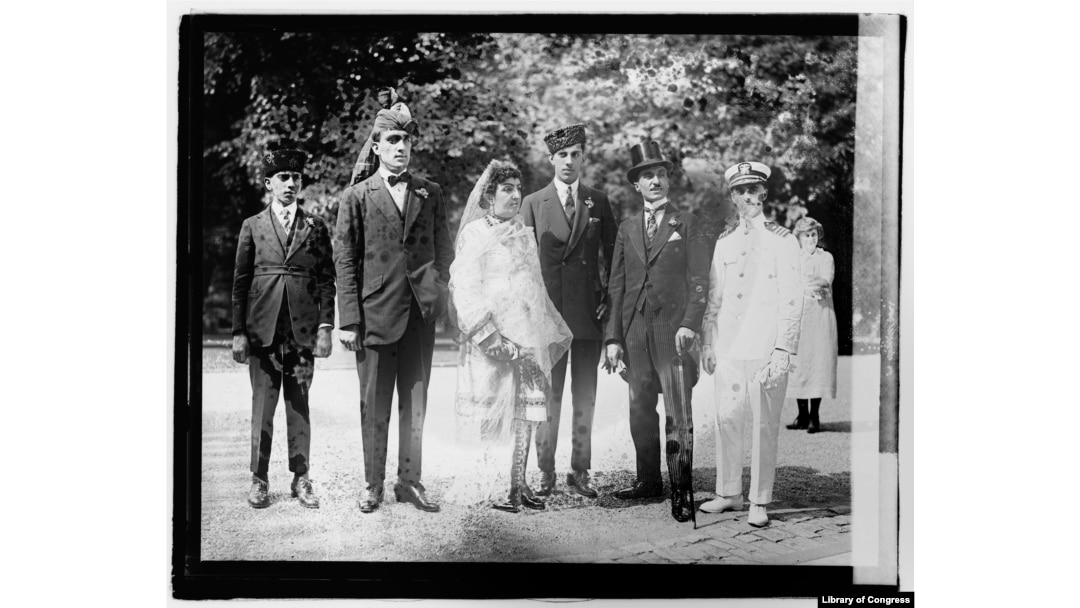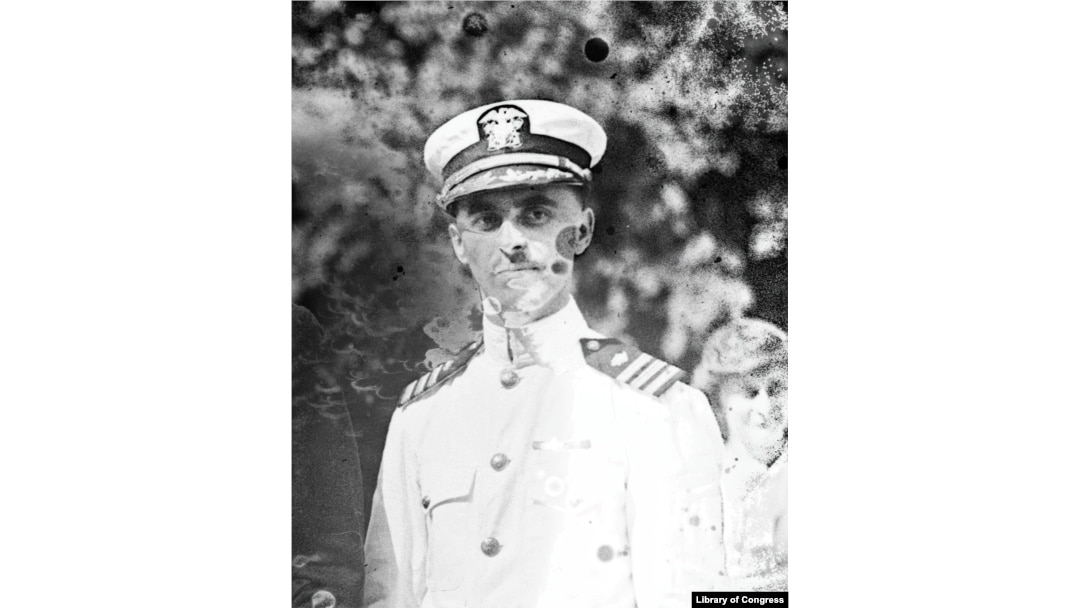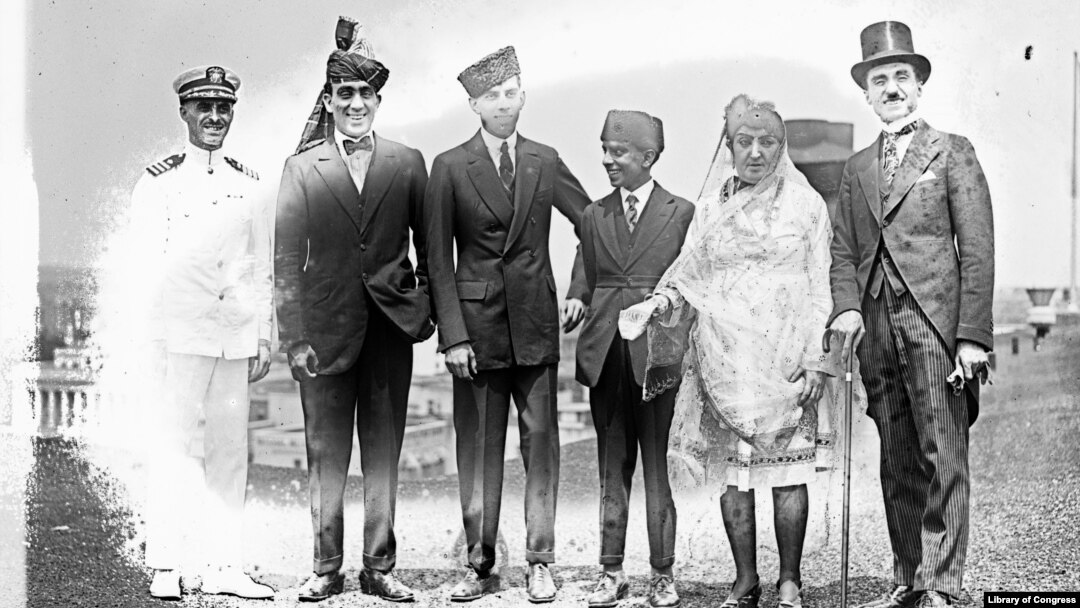If the photos didn’t exist, it might be hard to believe what took place inside the U.S. White House in the summer of 1921.
News pictures from the presidential lawn capture the immediate aftermath of a meeting between an Afghan “princess” and President Warren G. Harding. Prominent in the photos is a short, snappily dressed man who identified himself as Rodney S. Wyman, a “naval liaison officer” for the U.S. State Department.

“Princess Fatima” with her three adult sons and another man (in top hat). In the white uniform is Stanley Jacob Weinberg, in character as U.S. official Rodney S. Wyman.
“Wyman” was, in fact, Stanley Weinberg, born in 1890 into a lower-class family in Brooklyn. After his dreams of becoming a doctor were crushed by the high costs of a medical education, Weinberg began working a string of dead-end jobs. At the same time, he also began taking on various grandiose roles to win the respect he apparently craved.

Stanley Weinberg in 1921. The skilled impostor went by the name Stanley Clifford Weyman later in life.
At age 21, Weinberg masqueraded as the U.S. consul to Morocco. The flashy “official” racked up sizable bills in fine New York restaurants before he was arrested.
After serving prison time for that charade, Weinberg reinvented himself simultaneously as a Serbian military attaché and a U.S. naval lieutenant. When Weinberg’s Serbian diplomat character was asked for references, he gave out contact details for the prestigious American persona, and vice-versa. Other impersonations, including as Romania’s consul-general to the United States, followed, as did further jail time when he was unmasked.
“Princess Fatima,” an Afghan woman whose arrival in the United States created media hype thanks to a diamond she brought with her and a nose stud that The Washington Post noted she removed before going to bed "as other women remove their earrings." There is no evidence she was, in fact, a princess.
In 1921, Weinberg’s attention was caught by the arrival to the United States of “Princess Fatima,” who The New York Times described as the “sultana of Afghanistan.” She was reportedly seeking a meeting with the American president and arrived in the country with a particularly exquisite diamond that she suggested she might be willing to sell if the right price -- $500,000 -- was met.
The U.S. State Department at the time had been asked by its British counterparts not to meet with any Afghan representatives. A British Embassy official wrote, “We consider Afghanistan, though ostensibly independent, as still within our sphere of political influence, and are anxious to discourage any proceedings which imply that we are not concerned in the foreign relations of that country.”
American President Warren G. Harding, who met with Fatima and Weinberg. The Republican served from 1921 until his premature death in 1923 at age 57.
As Fatima and her sons sat in their hotel room -- ignored by U.S. officials -- Weinberg dressed himself in the most impressive naval-style uniform he could find, took the subway from Brooklyn to Manhattan, strode into the famous Waldorf-Astoria hotel, and apologized “profusely” to Fatima on behalf of the U.S. government for the diplomatic oversight. He promised the delighted woman an audience with the president within a week.
Some historians believe that what happened next may have been in part due to the ambiguous persona Weinberg chose. As a “State Department naval liaison officer,” real naval officers could have assumed Weinberg fit into the hierarchy of the State Department and was therefore none of their business. At the same time, State Department officials may have believed he existed somewhere in the complex rankings of the Navy.
News of the 1921 meeting published in The New York Times identifying Weinberg as an "interpreter." Fatima was joined by her three sons, not two as reported here.
Somehow Weinberg, Fatima, and her three sons were ushered into the White House to meet with Harding on July 25, 1921. A Washington Post account of the meeting was gaudy with details of the “picturesque group" and described at length Fatima’s clothing, as well as the “gifts of cashmere shawls, veils, Kermanshah rugs, tablecloths, and turbans” that she brought for the president.
And it was tablecloths that eventually unraveled Weinberg’s astonishing deception.
Fatima leaves the White House with her three sons and an unidentified naval officer after meeting with President Harding. The U.S. Library of Congress photo caption incorrectly identifies the official as Weyman/Weinberg.
Two months after the White House meeting, Fatima, whose bills at the Waldorf-Astoria were beginning to mount, wrote a letter to Secretary of State Charles Evans Hughes noting that she had given several tablecloths to “Captain Wyman” to pass on to Hughes’s wife.
"Wyman," Fatima wrote, had promised “to present them to you at once, but I very much doubt whether he ever did so…. In spite of my several requests, he has failed to respond to me [regarding] the presents I had given him to carry to Mrs. Hughes.”
After a quiet investigation within the State Department about who “Captain Wyman” really was, Weinberg was tracked down and arrested.
In his court appearance in April 1922, Weinberg's lawyer declared that his client “has never done anything which shows moral viciousness.” The judge cut him off to describe the serial impostor as “a dangerous man to be at-large.” Weinberg was sentenced to two years in prison for impersonating a U.S. naval officer.
An FBI photo of the Weinberg shoe collection that he used in his various disguises
Fatima later sold her diamond for $4,000, which may have helped settle the headline-grabbing bills she had incurred at the Waldorf-Astoria. She disappeared into obscurity after 1922.
Weinberg embarked on several more fraudulent escapades after he was released from prison. He lived until 1960 when, while working one of his real jobs as a night porter in a New York hotel, he attempted to stop an armed robbery and was shot dead. The detective in charge of the case reportedly remarked: "I've known about [Weinberg’s] past record for years. He did a lot of things in the course of his life, but what he did this time was brave."
Weinberg (far left) in his 1921 naval character with "Princess Fatima," her sons, and several unidentified men.
British author Sarah Burton, who researched Weinberg for a book on impostors, told RFE/RL the infamous pretender was “talented and highly intelligent” and may have avoided the drama-filled life he led if he had found the opportunities he longed for as a young man.
“His family were unable to give him the kind of education which would have enabled him to make his mark on the world in a legitimate way. This is quite typical of a particular kind of impostor: They would actually be high achievers if the world had given them a break early enough.”
But Weinberg seemed to have few regrets.
At the height of his notoriety, he told a reporter: "One man's life is a boring thing. I lived many lives. I'm never bored."


